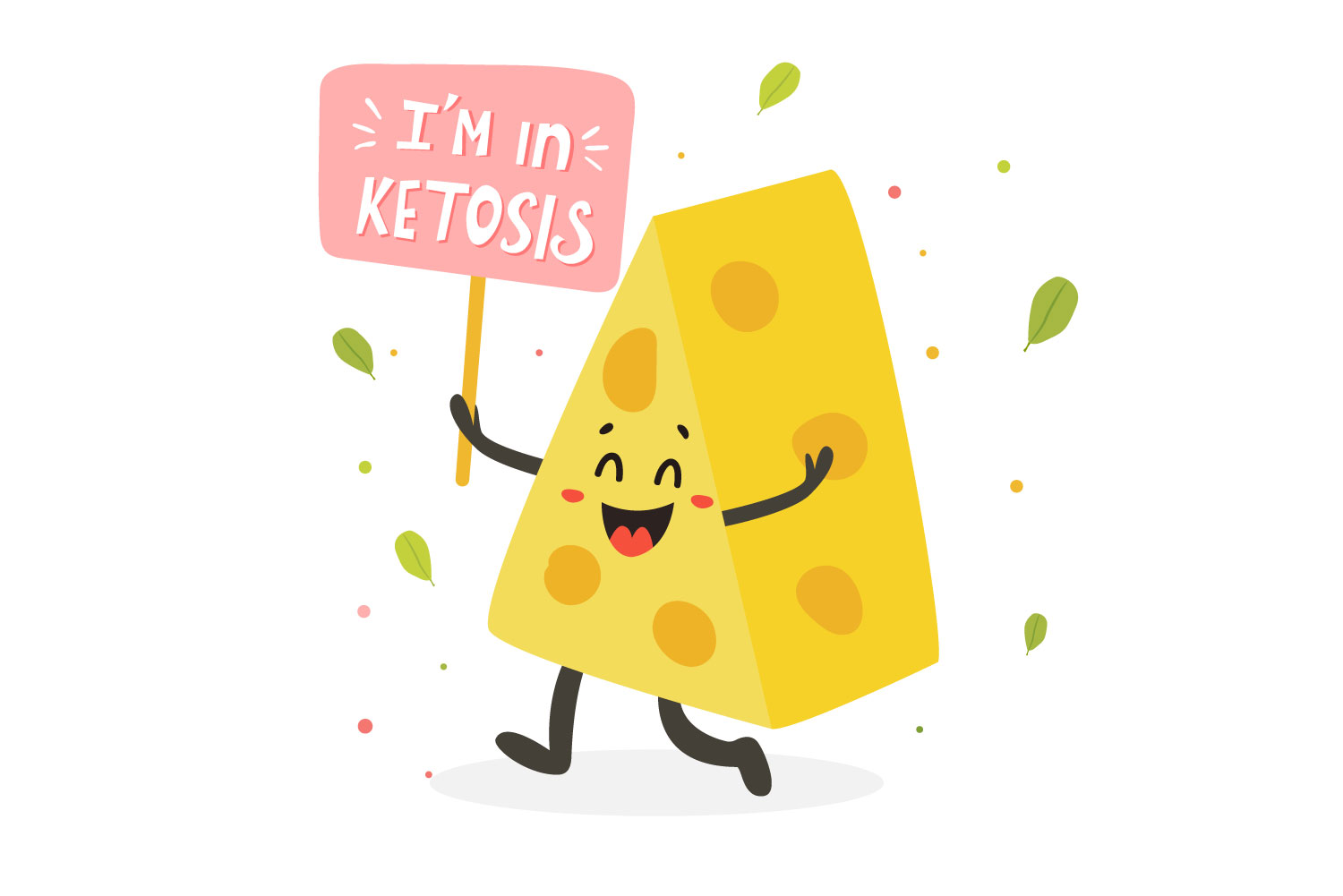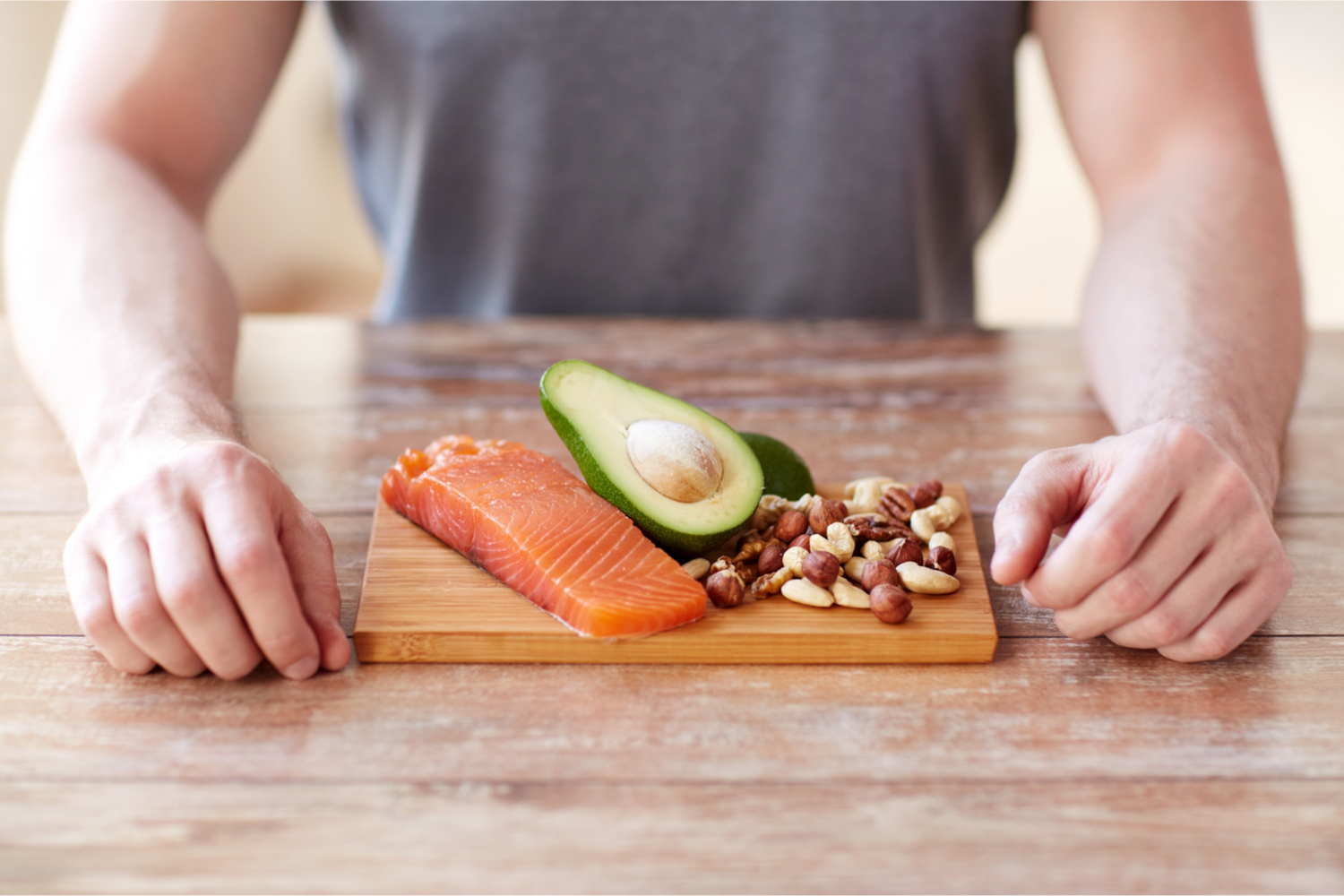SUMMARY
A low-carb diet can support healthy weight loss and reduce your risk of developing diseases such as type 2 diabetes. To succeed at this eating plan, you need to know which foods to choose and which ones to avoid.
More and more people these days are turning to a low-carb diet to help them achieve their health and fitness goals.
This eating plan comes in different shapes and forms. In some low-carb diets, the emphasis is on protein. Other versions of this diet are high in fat to encourage something called ketosis.
You can tailor a low-carb eating plan to meet your needs if you’re on a high-protein or paleo diet. It also works well for those on ketogenic eating plans, and it’s a great fit if you’re on the Atkins diet. Additionally, a low-carb diet can be customized to suit both vegans and meat eaters.
A low-carb diet is great for healthy weight loss. And if you boost the protein content, you can use this eating plan to build muscle.
Is a low-carb diet right for you? And if so, what steps can you take to make sure your experience with this popular eating plan is a success?
Keep reading if you want to:
- Know what a low-carb diet is
- Understand the ways in which carbs impact the body
- Learn about net carbs and their impact on your low-carb eating plan
- Gain insight into low-carb diet macros
- Understand which foods and beverages are suitable for inclusion in a low-carb diet
- Know which foods and beverages you should avoid if you’re looking to minimize carb intake
- Get the scoop on the health benefits of a low-carbohydrate diet
- Learn about tips that will help make your low-carb diet a success
- Access delicious low-carb recipes
What is a low-carb diet?
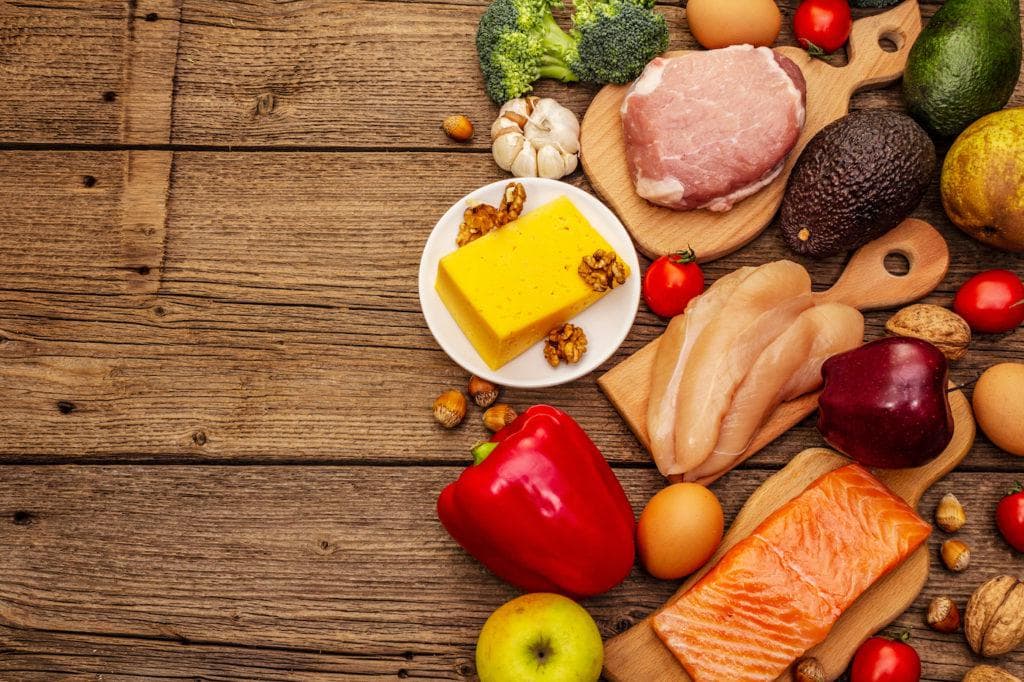
A low-carbohydrate diet is one in which there is very little carb intake. Carbs are found in foods that are high in sugar. This applies to foods high in processed sugar, such as candy, as well as foods high in natural sugar, such as fruit. You’ll also find lots of carbs in starchy foods such as rice and potatoes.
With a low-carb diet, foods that are starchy or sugary are replaced with choices that have much fewer carbs. The list of low-carb foods includes choices that are high in protein, such as beef and nuts. It also includes foods with high fat content, such as butter and coconut oil.
There are different types of low-carb diets:
- Low-carb high-protein
- Low-carb vegan
- Keto
- Low-carb paleo
You can adjust your low-carb eating plan to suit your goals and preferences.
How do carbs impact the body?

During the digestive process, carbs are broken down by the body into sugar, which is also referred to as glucose. This sugar is used as a source of energy, and it’s initially released into the blood. As your blood glucose levels rise, your body releases a hormone called insulin. Insulin is essential for moving sugar from the blood into the cells, where it can provide energy.
There are two types of carbs: simple and complex.
Simple carbohydrates
Simple carbs are digested very rapidly. They send a quick burst of energy to the bloodstream. However, because these carbs are digested so quickly, your energy levels may plummet later on after the initial rush.
You’ll find simple carbs in refined sugars, such as the white sugar that’s often used in foods that are highly processed. Refined sugars contain calories but lack minerals, vitamins and fiber; as a result, they can easily cause weight gain.
Here are some examples of foods that contain refined sugars:
- Candy
- Corn syrup
- Table sugar
- Regular (non-diet) soda
You’ll also find simple carbs in more wholesome foods such as fruits and milk. These are known as naturally occurring sugars. They differ from refined sugars in that they typically come with minerals, vitamins and fiber. As such, they’re a better choice than refined sugars when it comes to health and weight management.
Here are some examples of foods that contain naturally occurring sugars:
- Bananas
- Apples
- Grapes
- Cow’s milk
- Pears
- Raisins
- Figs
- Dates
Complex carbohydrates
Complex carbohydrates are digested more slowly than simple carbs. As a result, there isn’t that quick high and eventual crash that you get with simple carbohydrates. Complex carbs cause glucose to be released into the bloodstream at a slower, steadier pace.
You’ll find complex carbs in beans and starchy vegetables. They’re also present in grains such as brown rice.
Some complex carbs are refined, while others come from unrefined, whole-food sources. Unlike refined carbohydrates, unrefined carbs come with vitamins, minerals and fiber. These nutrients aren’t present in refined carbohydrates, and this makes unrefined carbs a healthier choice.
Here are some examples of foods that have refined complex carbs:
- White rice
- Flour
- White bread
These foods contain unrefined complex carbs:
- Garbanzo beans
- Brown rice
- Lentils
- Lima beans
- Oatmeal
- Peas
Health impact
Triglycerides are blood fats. They are an important indicator of metabolic health. According to the American Heart Association, high triglyceride levels are associated with conditions such as diabetes, heart disease and fatty liver.
Foods that are high in carbs – especially those that contain simple carbohydrates – can raise your triglyceride levels. As such, they may eventually put you at risk for ailments such as heart disease and diabetes.
Simple or complex?
If you’re on a low-carb diet, your goal is to limit all carbs, whether they’re simple or complex. But knowing the difference between the two is important.
If you’re including a small amount of carbs in your diet, it’s clear that complex carbs are a superior choice to simple carbohydrates. This stems from the fact that complex carbs contain nutrients that can benefit your health
Total carbs vs. net carbs

If you want to fully understand how a low-carb diet works, it’s essential to know a little bit about the difference between total carbs and net carbs.
This is a great time to talk about the ways in which carbs differ when it comes to digestibility. Some are carbs are digestible, while other pass through the body undigested.
A digestible carbohydrate will impact your body in all the ways that carbs typically do. However, if you consume a carb that is undigestible, your body won’t process it. It will simply be eliminated, and it won’t affect your body and your health in the ways that a typical carb would.
Fiber contains carbs. However, fiber isn’t digestible by the body. As a result, the carbs in fiber are eliminated by the body without being digested. The same is true of carbs found in sugar alcohols such as erythritol. These carbs pass through the body without being processed.
That brings us to the difference between total carbs and net carbs.
- Total carbs are the total amount of carbohydrates that a food contains. This includes carbs from fiber.
- Net carbs focus only on carbs that the body is able to digest. As a result, carbs from fiber and sugar alcohols aren’t included in this calculation.
This means that net carbs equal total carbs minus carbs from fiber and sugar alcohols.
The nutrition labels on low-carb foods will often list net carbs. This can be helpful as you map out how many carbs you plan to consume each day.
Low-carb diet macros

Before we dive into low-carb diet macros, it’s important to lay the groundwork by explaining a couple of concepts: ketosis and the ketogenic diet.
Ketosis and the ketogenic diet
As mentioned, the body typically relies on sugar for energy. Sugar comes from carbs.
If sugar is restricted due to a low-carb diet, the body will be forced to use other sources of energy. If you’re eating a diet with very few carbs and lots of fat, the body will get its energy from fat.
When this happens, you enter a state called nutritional ketosis. Ketosis can have a favorable impact on blood sugar levels, and it may also support weight loss.
There is a particular type of low-carb diet that emphasizes ketosis. It’s called a ketogenic diet, and it includes very few carbs and lots of fats.
Macro basics

That takes us to low-carb diet macros.
What exactly is a macro, anyway? The term macro refers to macronutrient ratios. Food has three main types of macronutrients: fats, carbs and protein. A food’s macro lets you know its breakdown when it comes to protein, carbs and fats.
There are different types of low-carb diets, and they each have varying rules when it comes to carb intake. Depending on the type of low-carb diet, total carbohydrate intake can range from 5 percent or less to 35 percent.
Low-carb high-fat
A keto diet is the most aggressive type of low-carb diet there is. As such, relative to other low-carb diets, a keto diet has fewer carbohydrates. It’s also highest in fat.
The macro for a ketogenic diet looks like this:
- 55 to 60 percent of calories from fat
- 30 to 35 percent of calories from protein
- 5 to 10 percent of calories from carbs
A keto diet is low in carbs and high in fats. However, not all low-carb high-fat diets are ketogenic.
Typically, you need to be getting 10 percent or less of your calories from carbs to be kicked into ketosis. There are some high-fat low-carb diets with a carb ratio of more than 10 percent. These eating plans have some of the same benefits of a keto diet; they can even out your blood sugar levels. However, they won’t put you into ketosis.
A low-carb high-fat diet with a carb ratio of more than 10 percent may be appealing if you want an eating plan that’s similar to keto but less restrictive. This diet can also be useful for those seeking to make a gentle and gradual transition into a keto eating plan.
Low-carb high-protein
Another choice to consider is a low-carb high-protein diet. With this eating plan, you’re consuming few carbs and lots of protein. The macro for a high-protein diet may look like this:
- 30-35 percent of calories from protein
- 25 percent of calories from carbs
- 40 to 45 percent of calories from fat
How many carbohydrates should I consume on a low-carb diet?
We’ve established that with a low-carb diet, carb intake can range from less than 5 percent to about 35 percent of total calories.
How does this translate into actual carbs?
Well, the Mayo Clinic reports that 240 calories from carbs is roughly equal to about 60 grams of carbohydrates.
If you are consuming 2,000 calories a day and want to eat low-carb, you need to make sure that no more than 35 percent of your diet is made up carbs. This translates into 700 calories or 175 grams of carbohydrates.
Low-carb food list
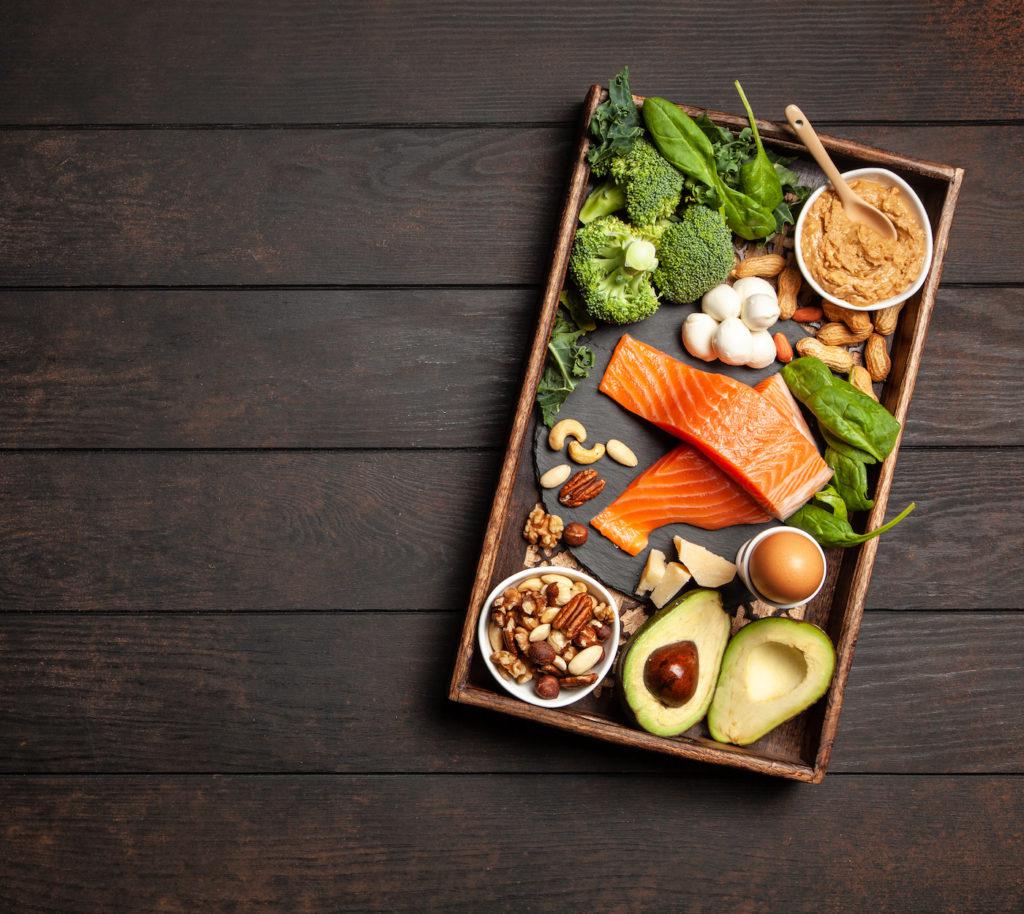
Now that you know the basics regarding a low-carb diet, it’s time to get into a few specifics regarding the types of food you can consume on this eating plan.
Below, we’ve listed some low-carb foods. We’ve included each food’s net carb count per 100 grams. This will help guide you as decide how to work these foods into your low-carb diet.
Our figures are sourced from data gathered by the U.S. Department of Agriculture (USDA).
Meats
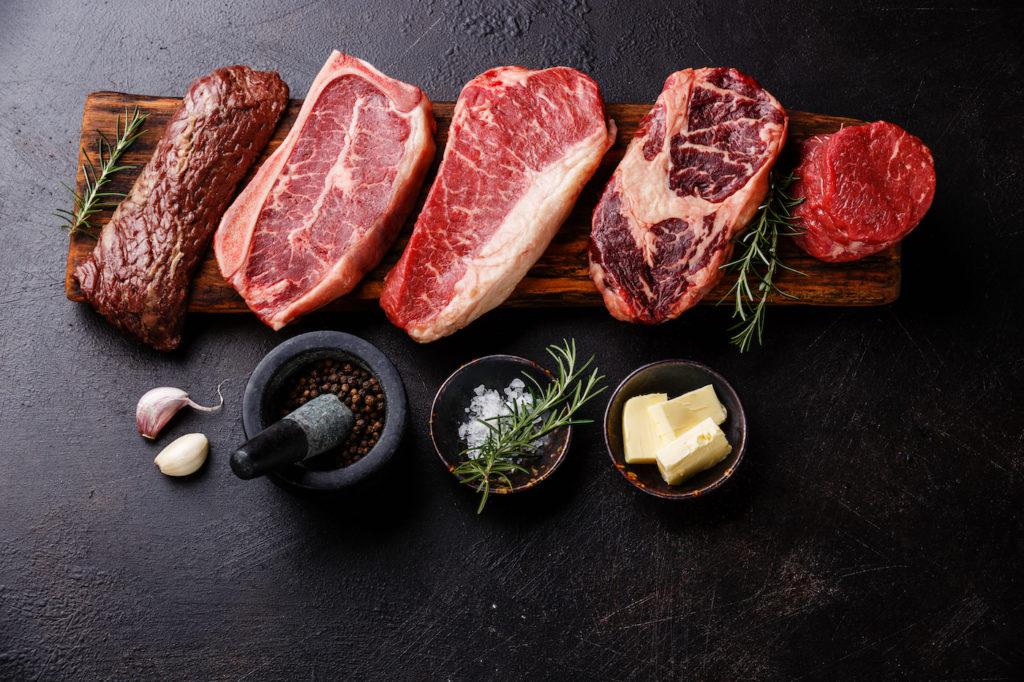
All the meats listed below have zero net carbs:
- Broiled ground lamb
- Pan-fried beef hamburger
- Veal bratwurst
- Roasted turkey drumstick
- Roasted turkey thigh
- Grass-fed ground bison (cooked)
- Roasted lean buffalo
- Roasted ham
- Braised pork loin
- Prime rib steak
- Roasted chicken drumsticks
- Ostrich steak
- Chuck steak
- Roasted chicken leg
- Broiled ground beef patty
- Roasted pork tenderloin
- Roasted chicken wings
- Skirt steak
- Deer tenderloin (cooked)
- Roasted pork backribs
- Ribeye steak
- Beef chuck pot roast
- Roast duck
- Roast goose
- Pork loin
- Emu steak
- Pork chops
- Broiled turkey patties
- Braised beef shortribs
- Grilled porterhouse steak
- Grilled T-bone steak
- Roasted wild boar
- Braised beef or chuck stew
- Lamb shank
- Grilled top round steak
- Top blade chuck steak
- Cooked ground pork
These meats have minimal net carbs:
- Canned ham – 0.3 grams
- Cured ham – 0.4 grams
- Pork bologna – 0.7 grams
- Dry pork and beef salami – 0.7 grams
- Salami – 1.2 grams
- Pepperoni – 1.2 grams
- Low-fat pastrami – 1.5 grams
- Turkey salami – 1.5 grams
- Dry pork salami – 1.6 grams
- Pan-fried bacon – 1.7 grams
- Cured smoked beef – 1.9 grams
- Pork beerwurst – 2.1 grams
- Sweet Italian sausage – 2.1 grams
- Chicken hot dog – 2.7 grams
- Pork bratwurst – 2.9 grams
- Chorizo – 3.8 grams
- Turkey hot dog – 3.8 grams
- Lamb liver (cooked) – 3.8 grams
Fish and seafood
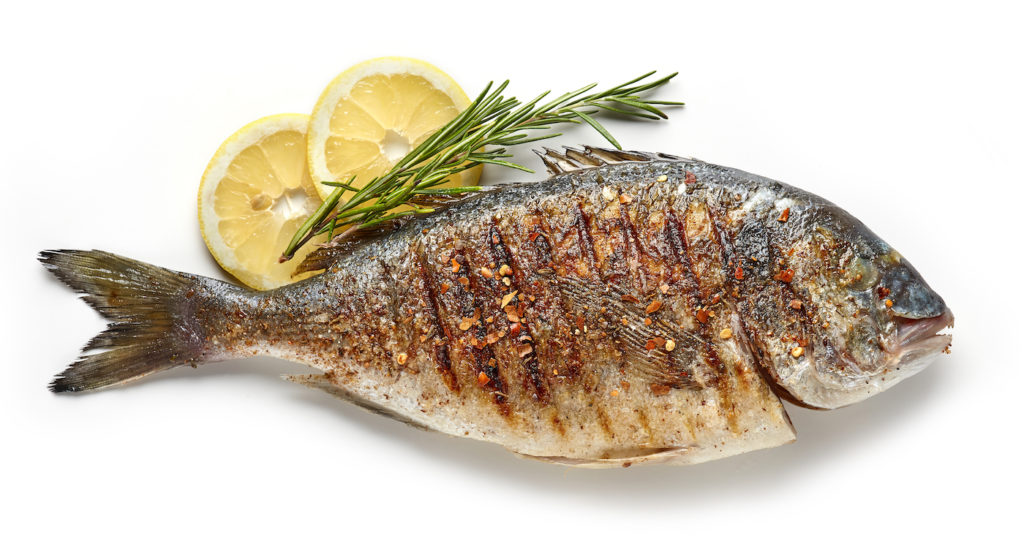
These fish and seafood items all have zero net carbs:
- Atlantic mackerel (cooked)
- Northern pike (cooked)
- Coho salmon (cooked)
- Raw pink salmon
- Atlantic herring
- Canned sardines
- Atlantic perch
- Smelt (cooked)
- Sturgeon (cooked)
- Trout (cooked)
- Tilefish (cooked)
- Canned white tuna
- Raw yellowfin tuna
- Whiting (cooked)
- Farmed Atlantic salmon
- Crayfish (cooked)
- Canned sockeye salmon
- Canned pink salmon
- Tilapia (cooked)
- Cod (cooked)
- Kippered herring
- Canned anchovies
- Alaska pollock (cooked)
- Pompano (cooked)
- Haddock (cooked)
- Halibut (cooked)
- Alaskan king crab
- Blue crab
- Sea bass (cooked)
- Lobster (cooked)
- Snapper (cooked)
- Swordfish (cooked)
- Catfish (cooked)
- Striped bass (cooked)
- Pacific herring (cooked)
- King mackerel (cooked)
- Sablefish (cooked)
- Turbot (cooked)
- Orange roughy (cooked)
- Grouper (cooked)
- Canned blue crab
- Mahimahi (cooked)
- Walleye pike (cooked)
- Skipjack (cooked)
- Queen crab (cooked)
These fish and seafood choices have minimal net carbs:
- Blue crab cakes – 0.5 grams
- Dungeness crab (cooked) – 1 gram
- Shrimp (cooked) – 1.5 grams
- Cuttlefish (cooked) – 1.6 grams
- Baked conch – 1.7 grams
- Fish roe (cooked) – 1.9 grams
- Spiny lobster (cooked) – 3.1 grams
- Raw scallops – 3.2 grams
- Raw clams – 3.6 grams
- Octopus (cooked) – 4.4 grams
- Clams (cooked) – 5.1 grams
Vegetables
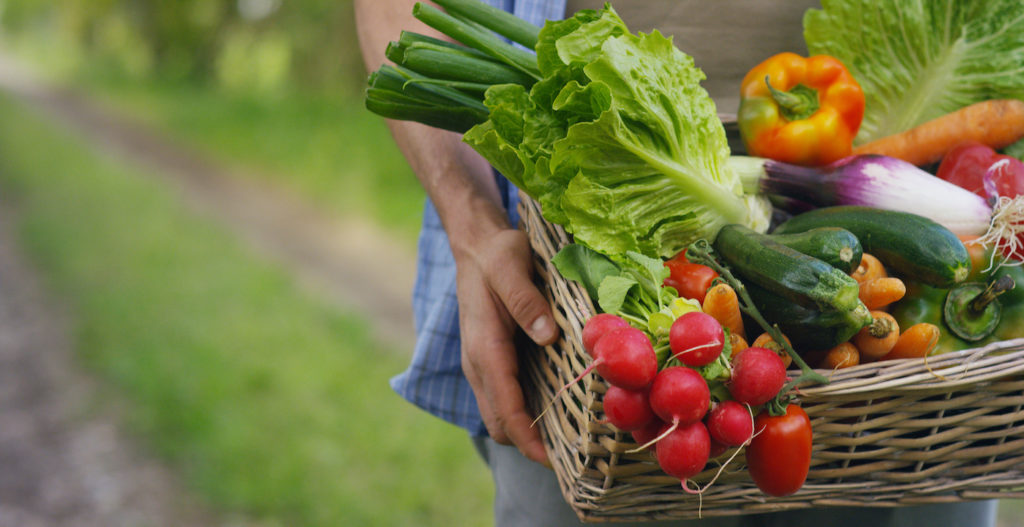
These veggies all have a low net carb count:
- Rapini – 0.2 grams
- Alfalfa sprouts – 0.2 grams
- Endive – 0.3 grams
- Kale – 0.3 grams
- Beet greens – 0.6 grams
- Watercress – 0.8 grams
- Cilantro – 0.9 grams
- Canned asparagus – 0.9 grams
- Bamboo shoots (cooked) – 0.9 grams
- Sour pickled cucumber – 1.1 grams
- Butterhead lettuce – 1.1 grams
- Bok choy – 1.2 grams
- Celery – 1.4 grams
- Spinach – 1.4 grams
- Sauerkraut – 1.4 grams
- Dill pickles – 1.4 grams
- Collards – 1.4 grams
- Mustard greens – 1.5 grams
- Radishes – 1.8 grams
- Cooked okra – 2 grams
- Swiss chard – 2.1 grams
- Zucchini – 2.1 grams
- Stir-fried white button mushrooms – 2.2 grams
- Canned palm hearts – 2.2 grams
- Summer squash – 2.3 grams
- Sauteed green bell peppers – 2.4 grams
- Portobello mushrooms – 2.6 grams
- Kohlrabi – 2.6 grams
- Tomatoes – 2.7 grams
- Eggplant – 2.9 grams
- Crookneck summer squash – 2.9 grams
- Green bell peppers – 2.9 grams
- Cauliflower – 3 grams
- Cucumber – 3.1 grams
- Cabbage – 3.3 grams
- Purslane – 3.4 grams
- Broccoli – 4 grams
Nuts and seeds
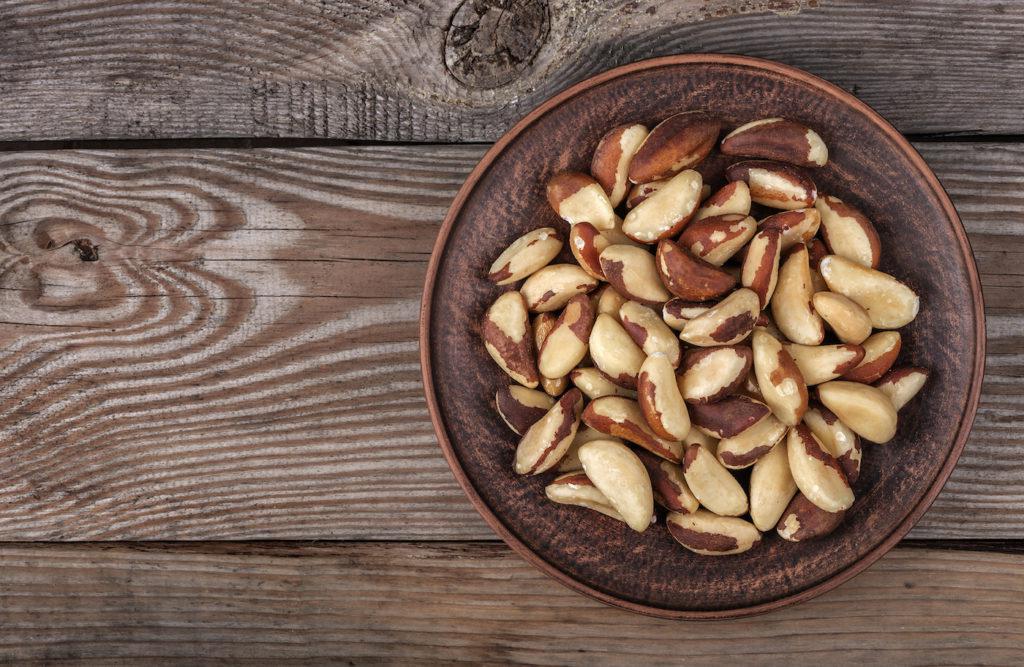
These nuts and seeds have minimal net carbs:
- Flax seeds – 1.6 grams
- Dried pili nuts – 4 grams
- Brazil nuts – 4.2 grams
- Pecans – 4.3 grams
- Dried pumpkin and squash seeds – 4.7 grams
- Hemp seeds – 4.7 grams
Dairy and egg products

These dairy products all have zero net carbs:
- Whipped butter
- Ghee
- Soft goat cheese
These dairy and egg products have minimal net carbs:
- Gruyere cheese – 0.4 grams
- Brie cheese – 0.5 grams
- Camambert – 0.5 grams
- Egg omelet – 0.6 grams
- Raw eggs – 0.7 grams
- Monterey cheese – 0.7 grams
- Raw egg whites – 0.7 grams
- Poached eggs – 0.7 grams
- Fried eggs – 0.8 grams
- Hard boiled eggs – 1.1 grams
- Swiss cheese – 1.4 grams
- Scrambled eggs – 1.6 grams
- Mozzarella cheese – 1.7 grams
- Low-fat cheddar cheese – 1.9 grams
- Sharp cheddar cheese – 2.1 grams
- Gouda cheese – 2.2 grams
- Low-fat cottage cheese – 2.7 grams
- Heavy whipping cream – 2.8 grams
- Light whipping cream – 3 grams
- Hard grated parmesan – 3.2 grams
- Cheddar cheese – 3.4 grams
- Cottage cheese – 3.4 grams
- Nonfat Greek yogurt – 3.6 grams
- Raw egg yolks – 3.6 grams
- Feta cheese – 3.9 grams
- Plain Greek yogurt – 4 grams
Beans
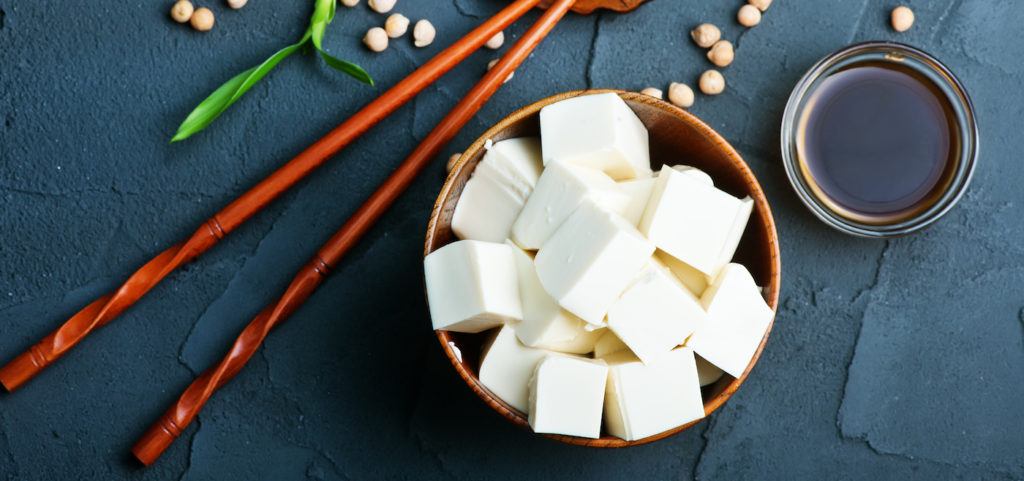
These foods all originate from beans, and they’re low in net carbs:
- Firm tofu – 0.5 grams
- Soft tofu – 1 gram
- Boiled soybeans – 2.4 grams
Low-carb beverage list

We’ve listed each beverage’s net carb count per 100 grams. Again, our figures come from USDA data.
These beverages have zero net carbs:
- Water
- Unflavored soy protein powder
- Black tea
- Coffee
- Green tea
- Hibiscus tea
- Malt liquor
- Rum
- Vodka
- Club soda
These beverages have a low net carb count:
- Unsweetened almond milk – 1.1 grams
- Soy milk – 1.2 grams
- Vitamin fortified water – 1.3 grams
- Light beer – 1.6 grams
- Espresso – 1.7 grams
- Pino blanc – 1.9 grams
- Pinot gris – 2.1 grams
- Chardonnay – 2.2 grams
- Pinot noir – 2.3 grams
- Merlot – 2.5 grams
- Red wine – 2.6 grams
Foods to avoid or minimize on a low-carb diet
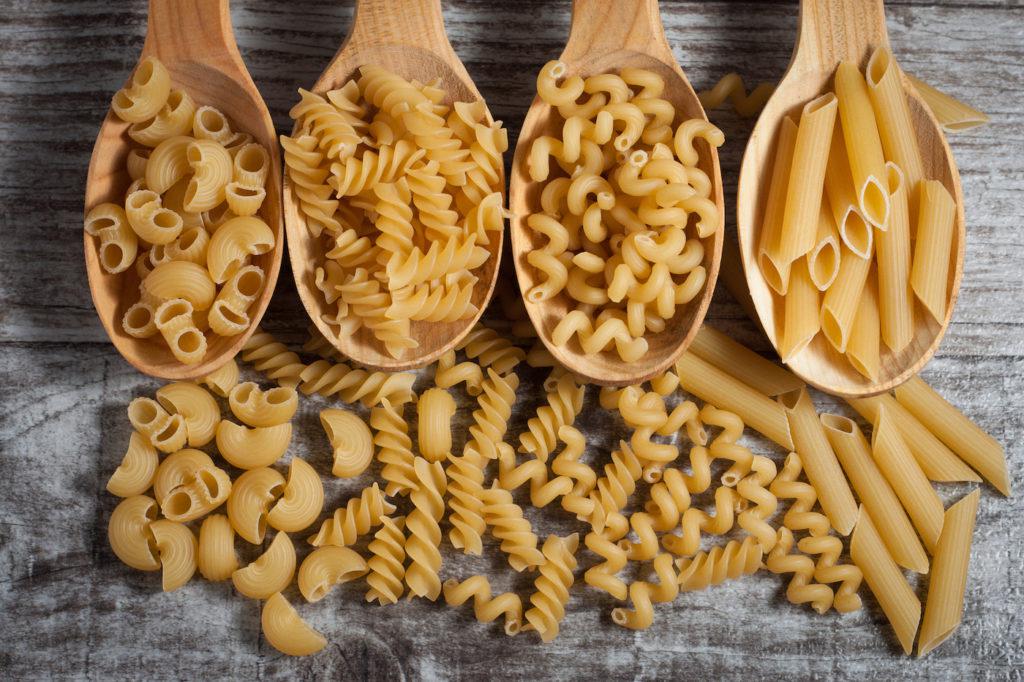
Below, we’ve listed some foods to avoid or minimize on your low-carb eating plan.
Each food’s net carb count per 100 grams is included, sourced from USDA data.
Grains and pasta
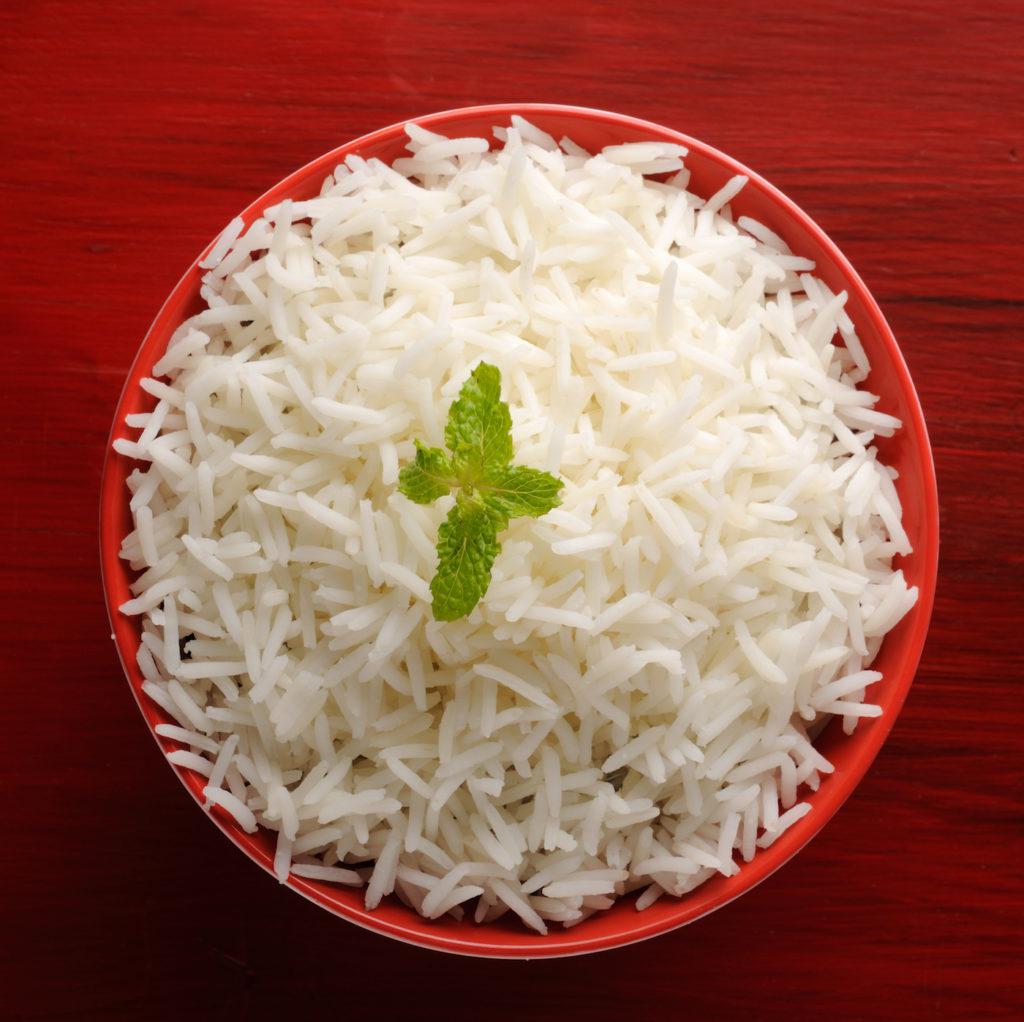
- Oat bran – 50.8 grams
- Pasta (cooked) – 29.1 grams
- Rice bran – 28.7 grams
- White rice – 27.8 grams
- Pearled barley (cooked) – 24.4 grams
- Egg noodles (cooked) – 24 grams
- Brown rice – 24 grams
- Kamut (cooked) – 23.3 grams
- Rice noodles (cooked) – 23 grams
- Spelt (cooked) – 22.5 grams
- Millet (cooked) – 22.4 grams
- Couscous (cooked) – 21.8 grams
- Japanese soba noodles – 21.4 grams
- Wild rice (cooked) – 19.5 grams
- Quinoa (cooked) – 18.5 grams
- Roasted buckwheat groats – 17.2 grams
- Teff (cooked) – 17.1 grams
- Amaranth (cooked) – 16.6 grams
- Bulgur (cooked)– 14.1 grams
- Yellow cornmeal (grits) – 13.2 grams
- Oatmeal (cooked) – 10.3 grams
Fruits
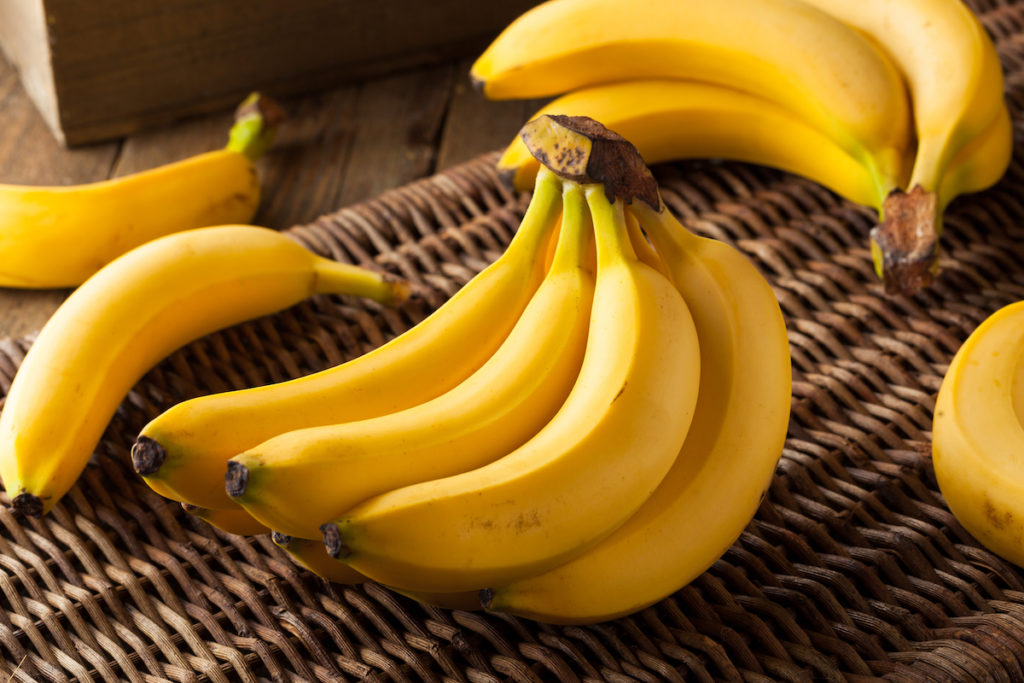
- Prunes – 89.1 grams
- Peaches (dried) – 83.2 grams
- Apricots (dried) – 82.9 grams
- Bananas (dried) – 78.4 grams
- Sweetened dried cranberries – 77.5 grams
- Raisins – 74.8 grams
- Zante currants – 72.6 grams
- Sweetened dried blueberries – 72.5 grams
- Medjool dates – 68.3 grams
- Goji berries (dried) – 64.1 grams
- Figs (dried) – 54.1 grams
- Plaintains – 30.2 grams
- Durian – 23.3 grams
- Custard-apple – 22.8 grams
- Jackfruit – 21.8 grams
- Bananas – 20.2 grams
- Red or green grapes – 17.2 grams
- Fuyu persimmon – 15 grams
- Cherimoya – 14.7 grams
- Pomegranates – 14.7 grams
- Mangos – 13.4 grams
Beans and lentils
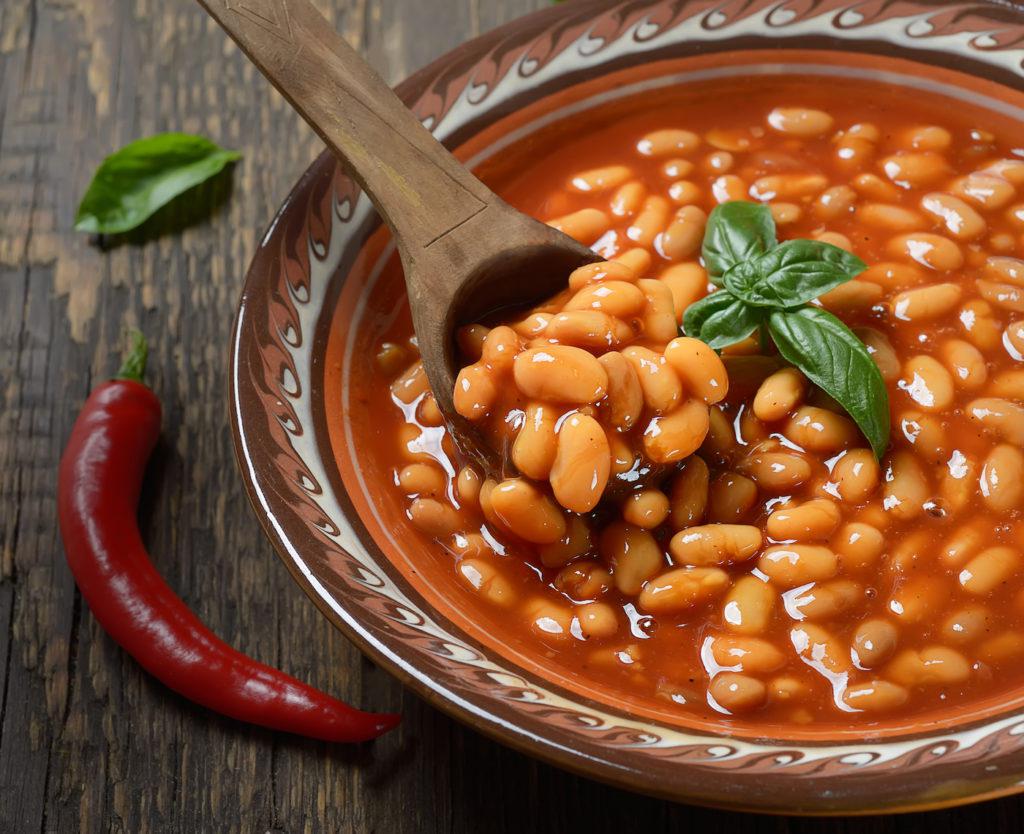
- Falafel – 31.8 grams
- Dry-roasted soybeans – 20.9 grams
- Chickpeas (cooked) – 19.8 grams
- Large white beans (cooked) – 18.8 grams
- Adzuki beans – 17.5 grams
- Pinto beans (cooked) – 17.2 grams
- Canned baked beans – 17 grams
- Kidney beans – 16.4 grams
- Hummus – 16.1 grams
- Navy beans – 15.6 grams
- Blackeyed peas (cooked) – 15.3 grams
- Black beans – 15 grams
- Broad beans – 14.3 grams
- Great Northern beans – 14.1 grams
- Lima beans – 13.9 grams
- Split peas – 12.8 grams
- Lentils (cooked) – 12.2 grams
Fish and seafood
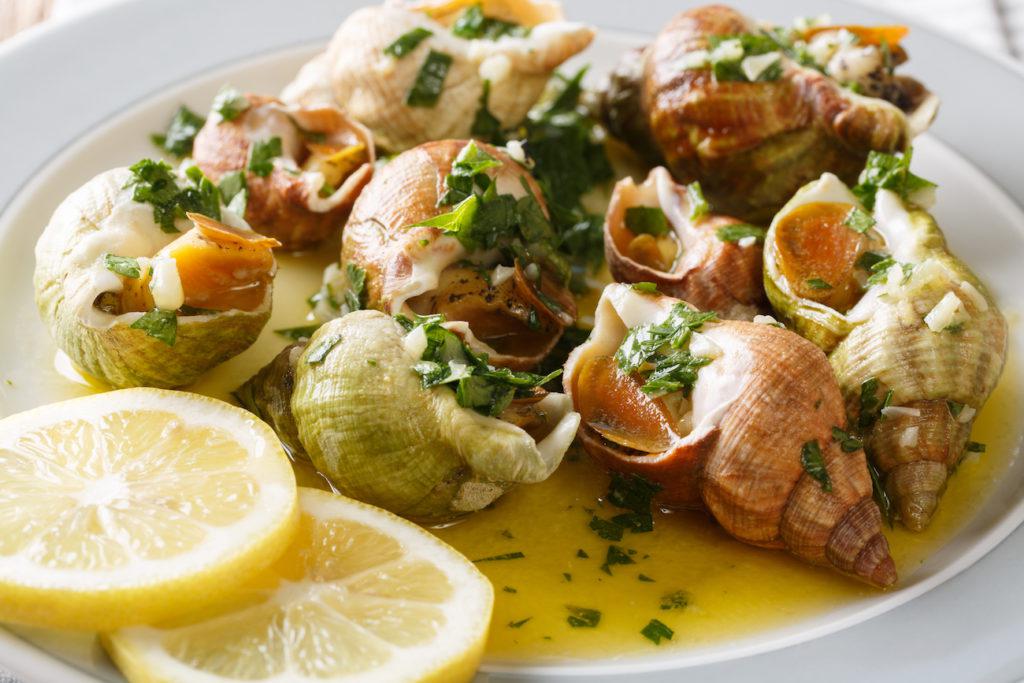
- Whelk (cooked) – 15.5 grams
- Imitation crab meat – 14.5 grams
- Abalone (cooked) – 11.2 grams
Dairy and egg products

- Dried whey powder – 73.5 grams
- Sweetened condensed milk – 54.4 grams
- Gjetost cheese – 42.7 grams
- Ice cream cookie sandwich – 38.4 grams
- Non-fat chocolate yogurt – 22.3 grams
- Soft-serve chocolate ice cream – 21.5 grams
- Non-fat vanilla yogurt – 17 grams
- Fat-free sour cream – 15.6 grams
Nuts and seeds
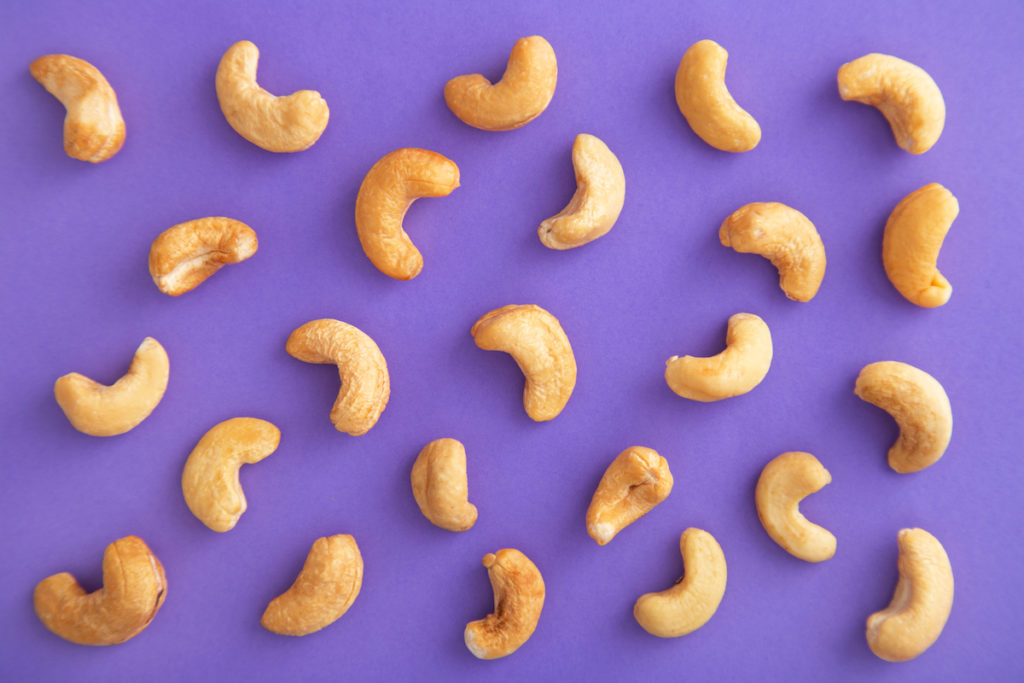
- Japanese chestnuts (dried) – 81.4 grams
- Chinese chestnuts (dried) – 79.8 grams
- Ginkgo nuts (dried) – 72.5 grams
- Lotus seeds (dried) – 64.5 grams
- Acorns (dried) – 53.7 grams
- Roasted chestnuts – 52.4 grams
- Coconut (dried) – 44.4 grams
- Shredded coconut meat – 43.2 grams
- Cashews – 26.9 grams
- Cashew butter – 25.6 grams
- Peanut butter – 18.3 grams
- Tahini – 16.9 grams
- Pistachio nuts – 16.6 grams
- Dry-roasted sunflower seeds – 13 grams
- Dry-roasted peanuts – 12.9 grams
Beverages to avoid or minimize on a low-carb diet
These beverages are relatively high in carbs.
We’ve shown each beverage’s net carb count per 100 grams, as sourced from USDA data.
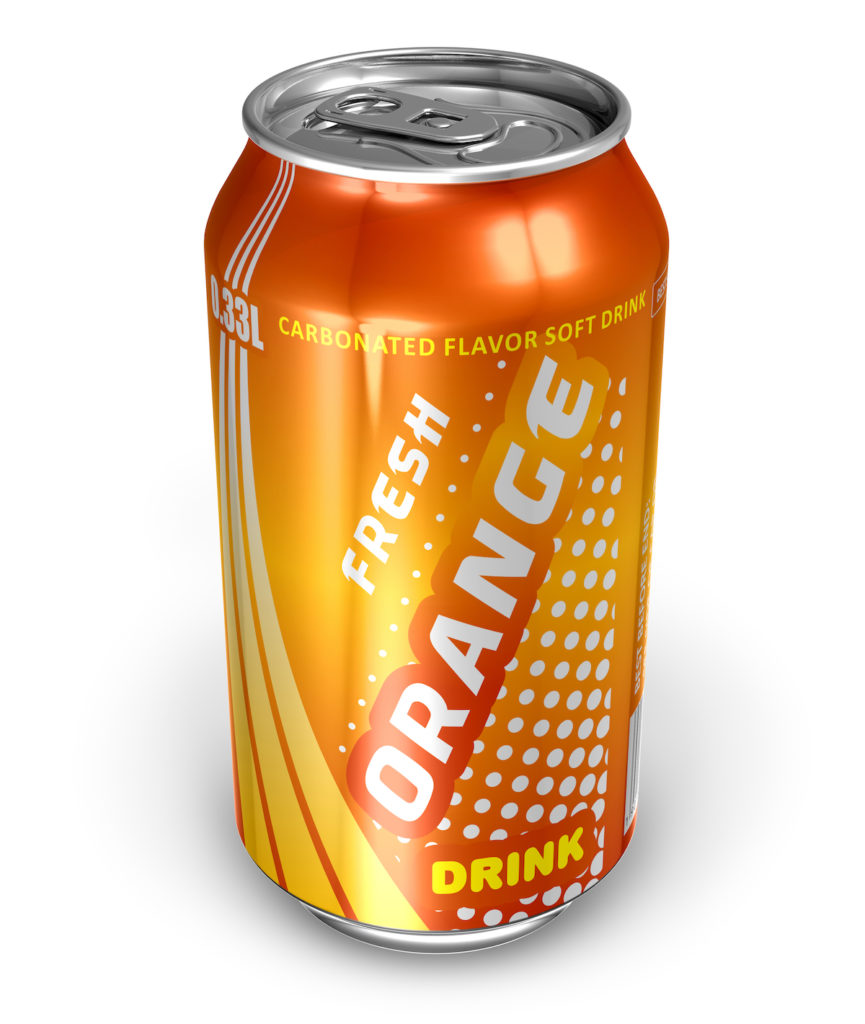
- Cocoa mix powder – 80 grams
- Powdered instant coffee – 75.4 grams
- Unsweetened lemon instant tea – 73.5 grams
- Chocolate drink powder – 59.2 grams
- Slimfast shake mix – 55.8 grams
- Unsweetened decaffeinated instant tea – 50.2 grams
- Coffee liqueur – 46.8 grams
- Fruit punch frozen concentrate – 41 grams
- Citrus fruit juice frozen concentrate – 40 grams
- Orange drink frozen concentrate – 38.9 grams
- Whey protein powder – 29.1 grams
- Cranberry-apple juice – 15.9 grams
- Daiquiri – 15.7 grams
- Canned grape drink – 15.7 grams
- Minute Maid Lemonada Limeade – 13.8 grams
- Sweet dessert wine – 13.7 grams
- Late harvest white wine – 13.4 grams
- Cream soda – 13.3 grams
- Orange juice drink – 13.2 grams
- Rockstar energy drink – 12.7 grams
- Sweetened ready-to-drink milk-based coffee – 12.6 grams
- Orange soda – 12.3 grams
- Kiwi strawberry juice drink – 12.3 grams
- Cranberry juice cocktail – 12.3 grams
- Minute Maid Lemonade – 12.1 grams
- Dry dessert wine – 11.7 grams
- Fortified acai berry drink – 11.6 grams
- Horchata – 11.5 grams
- Ice mocha – 11.4 grams
Health benefits of a low-carb diet

A low-carb diet offers these health benefits:
1. Supports healthy weight loss
Low-carb diets can help you achieve healthy weight loss.
Research shows that low-carb diets can naturally reduce your appetite. As a result, people on this diet tend to eat fewer calories. This ultimately results in weight loss.
2. Reduces harmful abdominal fat
There are different types of fat on your body.
Abdominal fat that lodges around your organs can be dangerous. This type of fat is linked with conditions such as inflammation and insulin resistance. These conditions can eventually develop into ailments such as type 2 diabetes and cardiovascular disease.
Studies have shown the low-carb diets are excellent at reducing or eliminating harmful abdominal fat. In so doing, low-carb diets may reduce your risk of heart disease and type 2 diabetes.
3. Lowers triglycerides
As previously mentioned, triglycerides are fat molecules that travel in the bloodstream. High triglyceride levels have been associated with conditions such as heart disease.
Studies show the low-carb diets cause a dramatic reduction in triglyceride levels. As such, this eating plan may lower your risk of heart disease.
4. Lowers blood sugar levels
High blood sugar has been linked with conditions such as type 2 diabetes.
Research indicates the a low-carb diet can lower your blood sugar if it’s high, and bring it to healthy levels.
One study looked at people with type 2 diabetes. After six months on a low-carb diet, 95 percent had lowered their blood sugar levels. As a result, they were able to reduce or eliminate their blood sugar medication.
5. May lower blood pressure

Many people suffer from high blood pressure. This condition has been linked with ailments such as heart disease, stroke and kidney failure.
Studies show that low-carb diets are an effective tool in lowering blood pressure. As such, this eating plan may be able to reduce your risk of experiencing a heart attack or a stroke.
6. May reduce LDL cholesterol levels
High low-density lipoprotein (LDL) cholesterol levels have been linked with heart attacks.
Research indicates that low-carb diets can work to lower LDL cholesterol levels. This means they can help improve heart health and reduce the likelihood of a heart attack.
7. May help treat certain brain disorders
The ketogenic diet has been used for many years to treat epilepsy in children.
Studies show that ketogenic and other low-carb diets may also be therapeutic for brain conditions such as Alzheimer’s and Parkinson’s disease.
Low-carb diet tips

These tips will help you accomplish your health and fitness goals while following a low-carb diet:
1. Know your carb counts and serving sizes
Success on a low-carb diet is all about restricting carb intake. This requires you to get familiar with the carb counts of the foods you eat.
Do the research necessary to calculate how many net carbs are in the foods you want to include with your diet. And get a sense of what a relevant serving size looks like, since the carbs provided by a food will vary based on quantity.
2. Plan ahead
When you’re following a fairly restrictive eating plan such as a low-carb diet, spontaneity doesn’t work. To succeed, you’ll need to carefully plan your meals.
It’s a good idea to set some time aside to figure out which meals you want to have during the week ahead. You can then shop for these meals on your next visit to the grocery store.
3. Do some meal prep
Preparing your meals in advance can help make sure the food you eat meets the requirements of your low-carb diet. You may also find that meal prep frees up your schedule by consolidating your cooking and reducing the time spent in the kitchen.
Here are some examples of low-carb meals you can prepare in advance:
- Protein pancakes
- Greek yogurt
- Grilled salmon
- Stir-fried shrimp and mushrooms with no rice
- Scrambled eggs
- Cauliflower rice
4. Travel with low-carb snacks
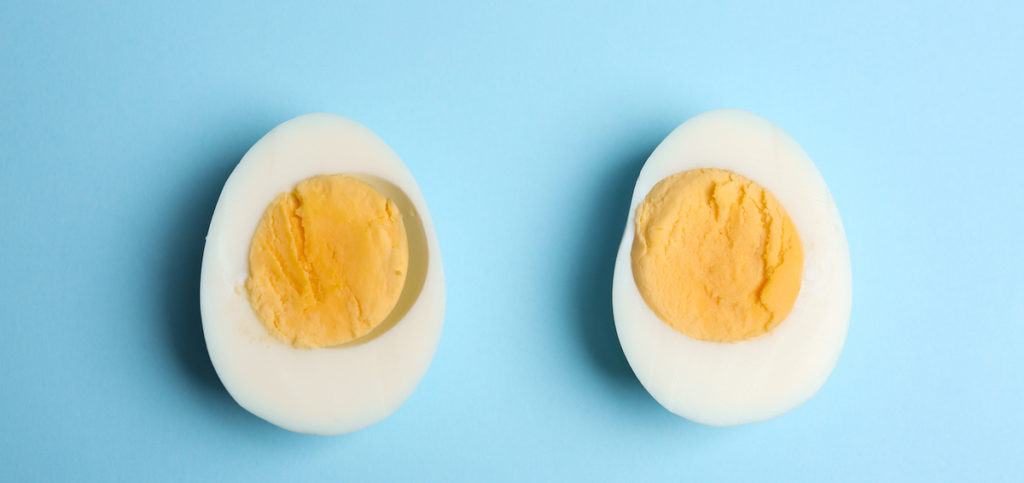
If you’re on the road, take low-carb snacks with you. These snacks will help you avoid temptation; they’ll ensure that you always have a low-carb food available if hunger strikes.
Here are some examples of low-carb snacks:
- Hard-boiled eggs
- Greek yogurt
- Cheddar cheese
- Brazil nuts
- Pecans
- Kale chips
5. Make substitutions
In some cases, you can dramatically change a meal’s carb content by making substitutions. Here are some examples:
- Ditch the bun on your burger and replace it with lettuce leaves
- Choose lettuce leaves instead of taco shells
- Use a cauliflower-based pizza crust instead of one with wheat flour
- Replace traditional pasta with noodles made from zucchini or cucumbers
Low-carb recipes
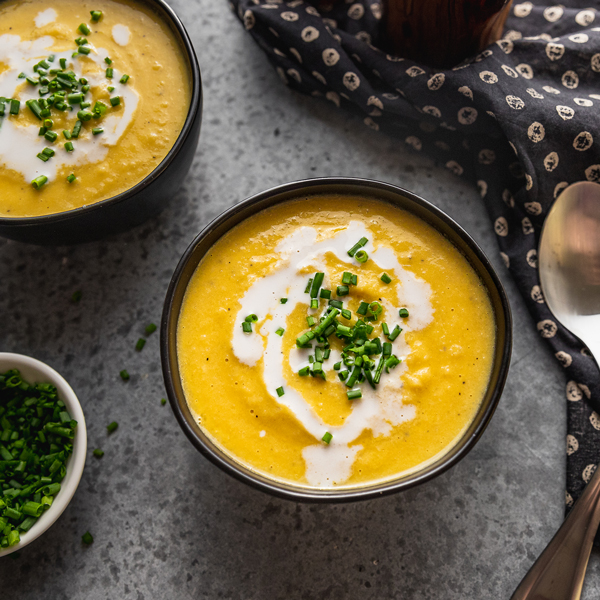
These recipes will add zing and excitement to your low-carb diet:
Keto “Potato” and Leek Soup
This delicious keto recipe replaces potatoes with a low-carb substitute: cauliflower. The end result is creamy comfort food for your soul.
Keto Sandwich Bread Recipe
Does your low-carb diet have you missing the taste of bread? This nourishing substitute uses flaxseed meal and almond flour instead of traditional flour. It’s low in carbs and keto-friendly.
Keto Brownies
Sugar is high in carbs, but that doesn’t mean you have to say goodbye to sweet treats on your low-carb diet. These mouthwatering brownies include monkfruit, a low-carb sweetener.
Easy Tempeh Chile
Suitable for vegans, this awesome chili has just 9 carbs per serving.
Apricot-Glazed Brisket
There’s nothing like a brisket to leave you feeling full and satisfied. This recipe uses apricot preserves to add a touch of sweetness.
Asian Lobster Salad
Who doesn’t love a good lobster salad? This version adds Asian flavor with ingredients such as tamari and Chinese cabbage,
Next steps
Now you have a complete understanding of all the key aspects of a low-carb diet. This knowledge will give you the insight you need to thrive on this eating plan. Make a shopping list and head to the grocery store so you can get started on stocking your low-carb kitchen.
If you’d rather skip the grocery shopping and cooking, subscribe to Fresh N Lean. Our Keto and Low-Carb Vegan meal plans are designed for those who are following low-carb diets. Fresh N Lean’s food is chef-prepared and organic, and we deliver it straight to your doorstep.
Fresh N Lean is the nation’s largest organic meal delivery service. Our tasty, chef-prepared cuisine is always fresh and never frozen, and we offer convenient meal plans like Protein+, Keto, Paleo, Standard Vegan and Mediterranean. Choose Fresh N Lean for affordable nutrition, delivered to your doorstep.

